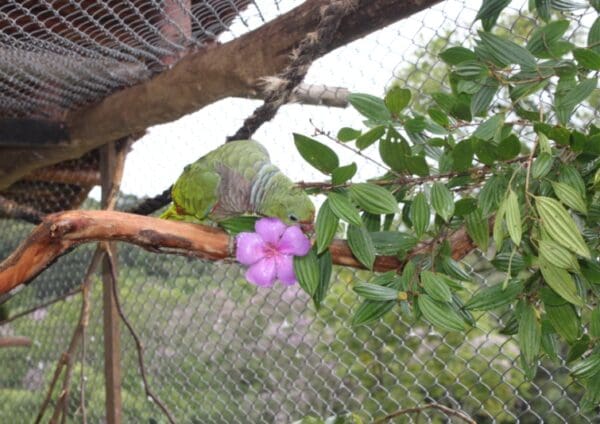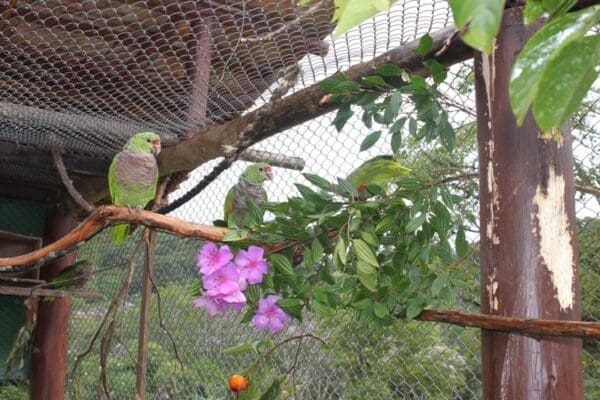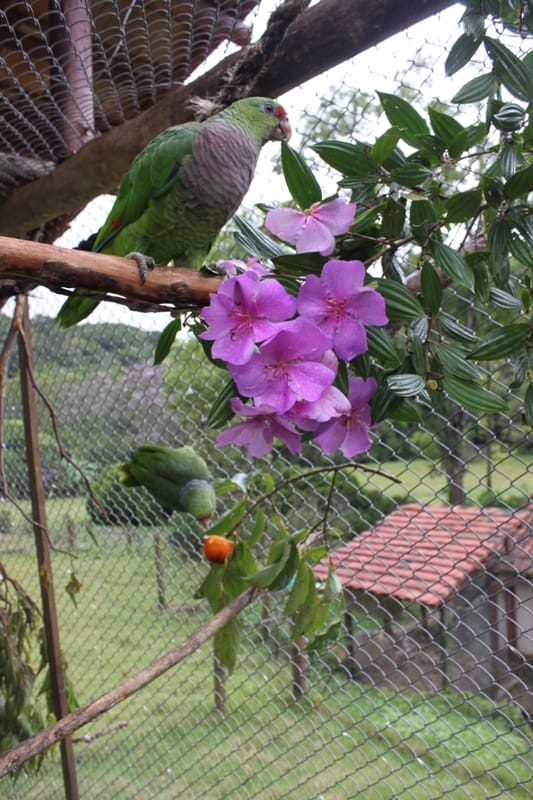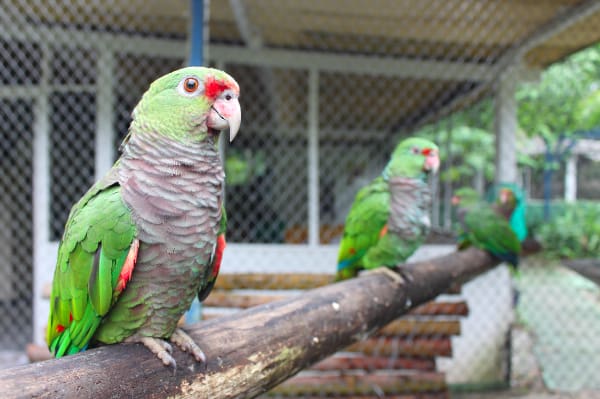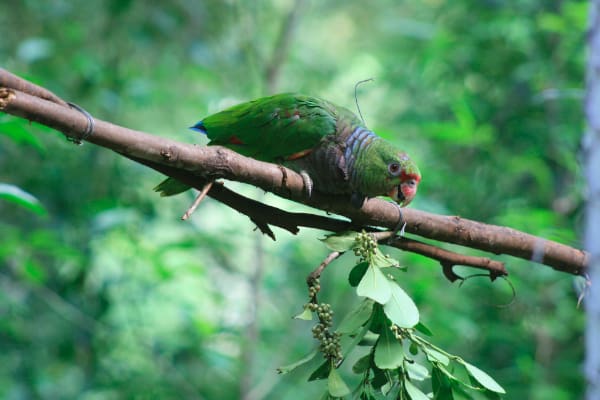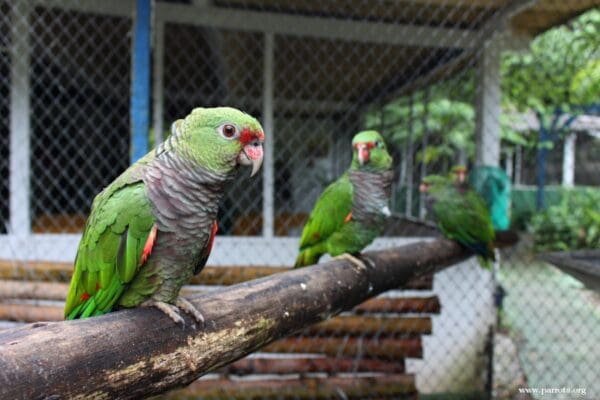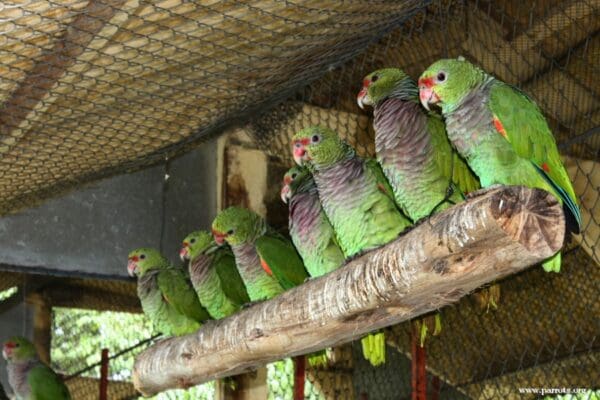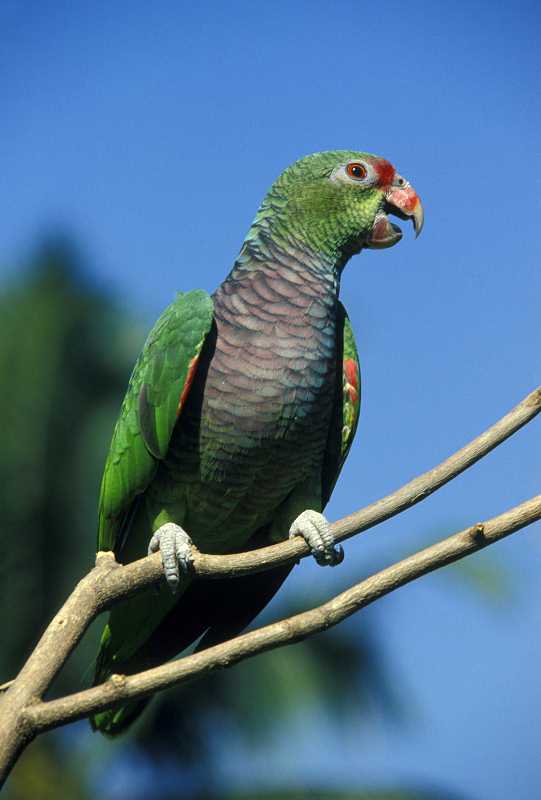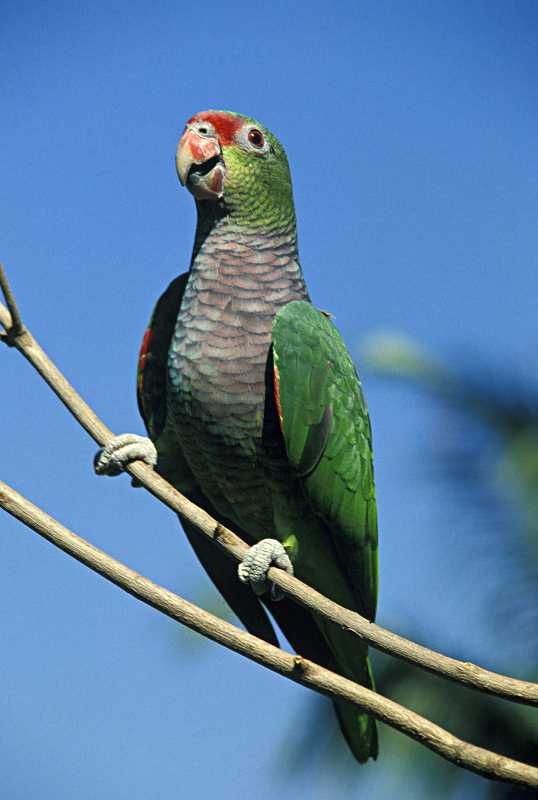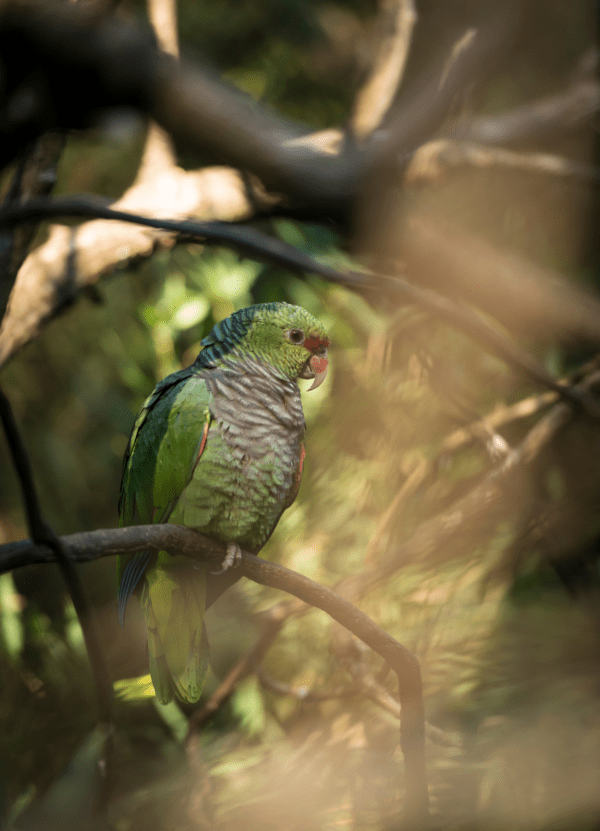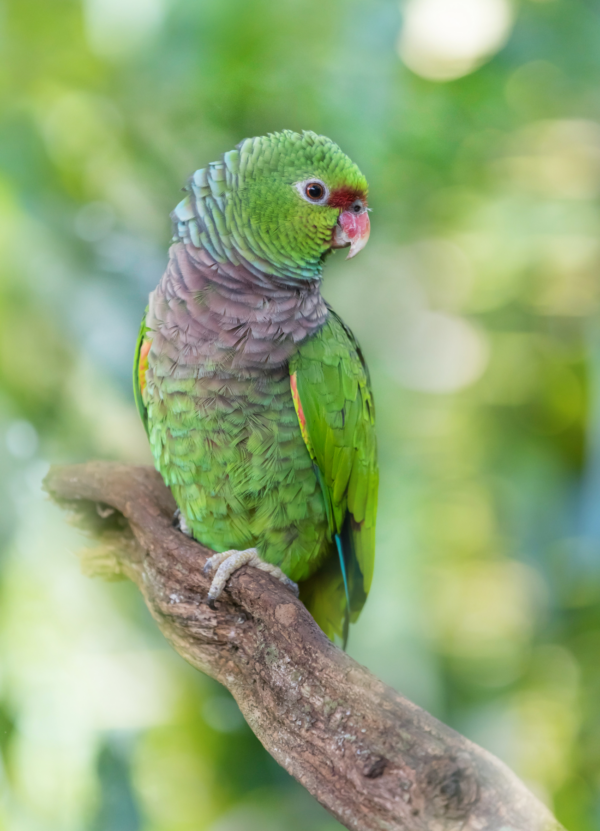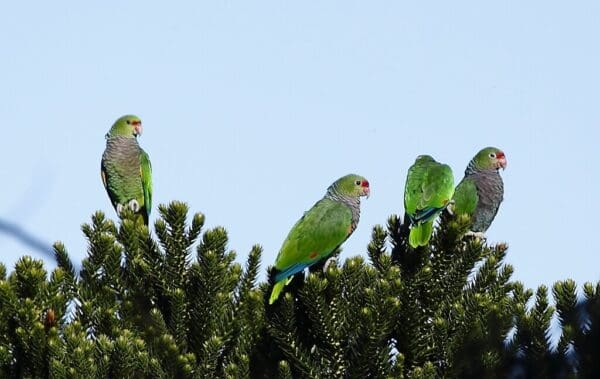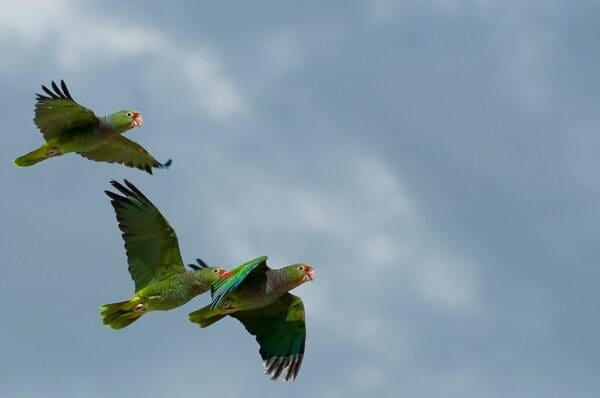Vinaceous Amazon
Also known as:
Vinaceous-breasted Amazon or Parrot
Also known as:
Vinaceous-breasted Amazon or Parrot
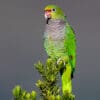
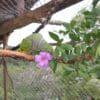
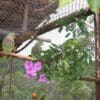
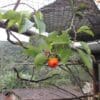
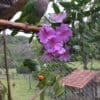
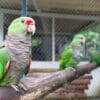
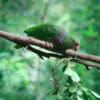
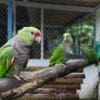
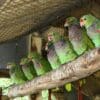
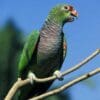
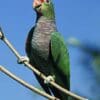

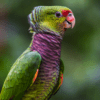
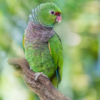
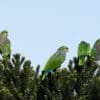
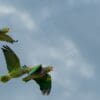
DID YOU KNOW?
The Vinaceous Amazon usually nests in large, hollow trees but occasionally will also nest in cliff crevices. This bird is also the only Amazon that has a red beak.

Amazona

vinacea
Size:
30 cm (11.7 in)
Weight:
370 g (13 oz)
Subspecies including nominate:
one
Colour Adult:
Both adults in general green with feathers edged dusty black; red lores and frontal band; green long feathers of hindneck and sides of neck, widely edged with pale blue and tipped with dusty black; lilac/red breast, variably washed with blue, the feathers edged with dusty black; green carpal edge, variably marked with yellow and red; secondary feathers 1-3 have red bases, the remainder green; green tail with dark red at base. Beak dull pink/red with horn-coloured tip. Eye ring grey. Eye red.
Colour Juvenile:
Generally duller than adults, red frontal band less far-reaching; breast washed with green; green/yellow carpal edge. Beak horn in colour with dull pink/red at base of upper mandible. Eye brown.
Call:
Calls are a variety of sounds including raucous and continuous notes, trilling flight calls, “squeaky door” notes, purring sounds and loud contact and alarm calls.
More Information:
Content Sources:
CITES
Avibase
BirdLife International
Cornell Lab of Ornithology/Birds of the World
A Guide to Parrots of the World, Juniper and Parr, 1998
Parrots of the World, Forshaw and Cooper, 1977. 2010 edition
Parrots: Status Survey and Conservation Plan 2000-2004, Snyder, McGowan, Gilardi, Grajal, 2000
Article ‘Vinaceous Amazon’, by Susan Clubb, DVM
Parrots of the World, Forshaw, 2006.
Parrots in Aviculture, Low, 1992.
Lexicon of Parrots, Thomas Arndt.
Psittacine Aviculture, Schubot, Clubb and Clubb, 1992.
Parrots: Their Care and Breeding, Low, 1986.
Captive Status:
Uncommon
Longevity:
Probably up to 50 yrs.
Housing:
Aviary or suspended enclosure, minimum length 3 m (9.8 ft).
Diet:
Fruits such as: apple, pear, cactus fruits, oranges, pomegranate, banana, forming about 30 percent of the diet; vegetables such as: carrot, celery, green beans and peas in the pod; fresh corn; green leaves such as: Swiss chard, lettuce, sowthistle, dandelion, chickweed; spray millet; small seed mix such as: canary, millet, and smaller amounts oats, buckwheat, safflower and a little hemp; soaked and sprouted sunflower seed (limited); cooked beans and pulses, boiled maize, and complete kibble.
Enrichment:
Very vigorous chewer so provide bird-safe wooden chew toys, fir, pine, elder or willow branches and perches, heat sterilized pine cones, vegetable tanned leather toys.
Nest Box Size:
Vertical box 12″ x 12″ x 24″ (30.5 cm x 30.5 cm x 61 cm).
Clutch Size:
3-4 oval shaped eggs, 38.0 x 28.5 mm (1.5 x 1 in).
Fledging Age:
7-9 weeks
Hatch Weight:
—
Peak Weight:
—
Weaning Weight:
—
World Population:
1000-2500 mature individuals, decreasing.
IUCN Red List Status:
Endangered
CITES Listing:
Appendix I
Threat Summary:
Human activities have greatly affected wild Vinaceous Amazon populations. Capture for the wild bird trade causes the loss of nestlings and cavity trees. Selective logging, colonisation and plantation agriculture threaten the remaining forests. The birds compete for nest cavities with feral honeybees, possums and several species of cavity-nesting birds, apparently during the incubation stage.
Range:
SE Brazil from S Bahia and W Espirito Santo south to NE Argentina, in Misiones and possibly NE Corrientes, and SE Paraguay.
Habitat:
Found up to 1200 m (3936 ft), locally 2000 m (6560 ft) in tropical and subtropical mixed evergreen forest; in Brazil humid coastal forest, in E Paraguay Araucaria angustifolia stands and Euterpeedulis woodlands.
Wild Diet:
Feeds on seeds of parana pine (Araucaria angustifolia, Araucariaceae) and fruits or seeds of palms (Syagrus romanzoffianum) and myrtles (Psidium longipetiolatum, Eugenia uniflora, E. involucrata, Campomanesia xanthocarpa), and flowers of Fabaceae (Erythrina falcata and Mimosa scabrella) and Theaceae (Laplacea fruticosa).
Ecology and Behaviour:
Found generally in pairs or small flocks with larger groups of around 30 in July-August. Nests in hollow of large tree; may breed in loose colonies.
Clutch and Egg Size:
3-4 oval-shaped eggs, 38.0 x 28.5 mm (1.5 x 1.1 in).
Breeding Season:
August-December; nests in the cavities of a variety of tree species.

